Many visitors bypass the Sacred Valley of Peru on their way to fulfill that travel bucket list item of going to Machu Picchu. The town of Ollantaytambo (pronounced O-yan-tai-tam-bo), also called Ollanta (O-yan-ta) by locals, is charming town often used as the start of the train journey to Machu Picchu. We were lucky enough to spend a few nights in this charming town with so much history during our Peru trip and loved it.
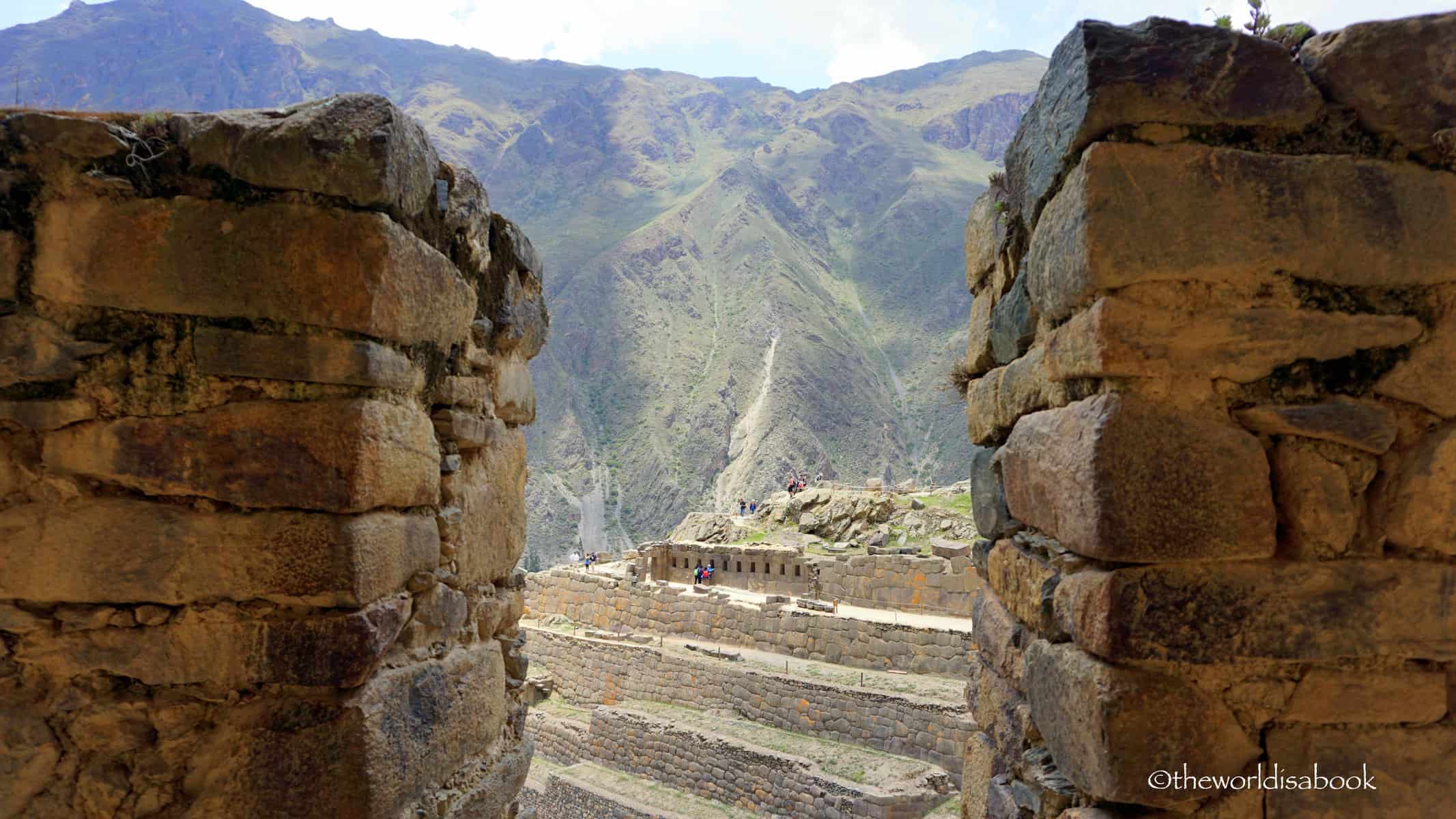
The main attraction of the town is the Ollantaytambo Fortress. This large 15th century Inca fortress is one of Peru’s best well-preserved ruins. This was our first glimpse of Temple Hill and the fortress from the town square.
Our guide told us the hill was supposed to be in the shape of a llama. We couldn’t quite picture it from our vantage point.
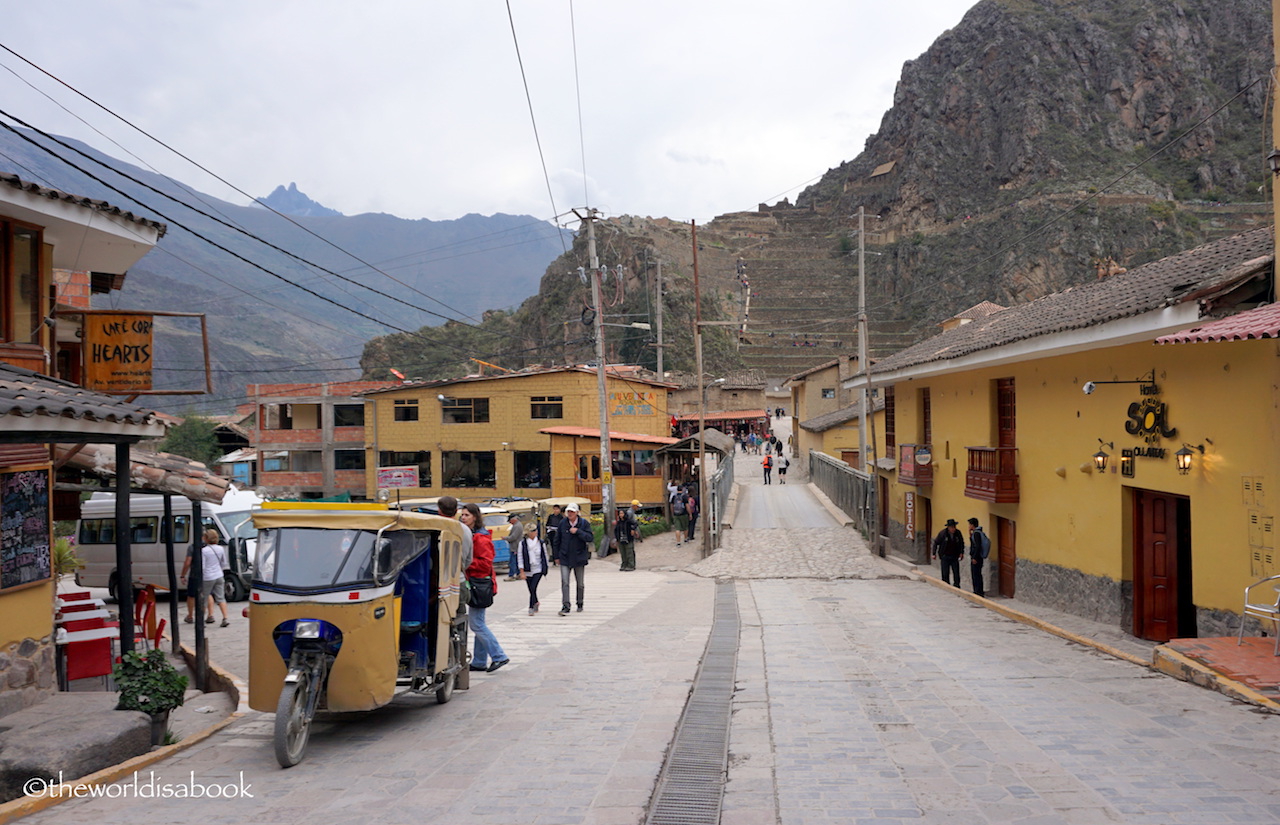
It was a short walk to the fortress from the center of town. But, it was even faster to get there when riding one of these tuktuks. We couldn’t pass it up. For about 1 sole or 30 cents (US), we had a great start to exploring the Inca fortress.
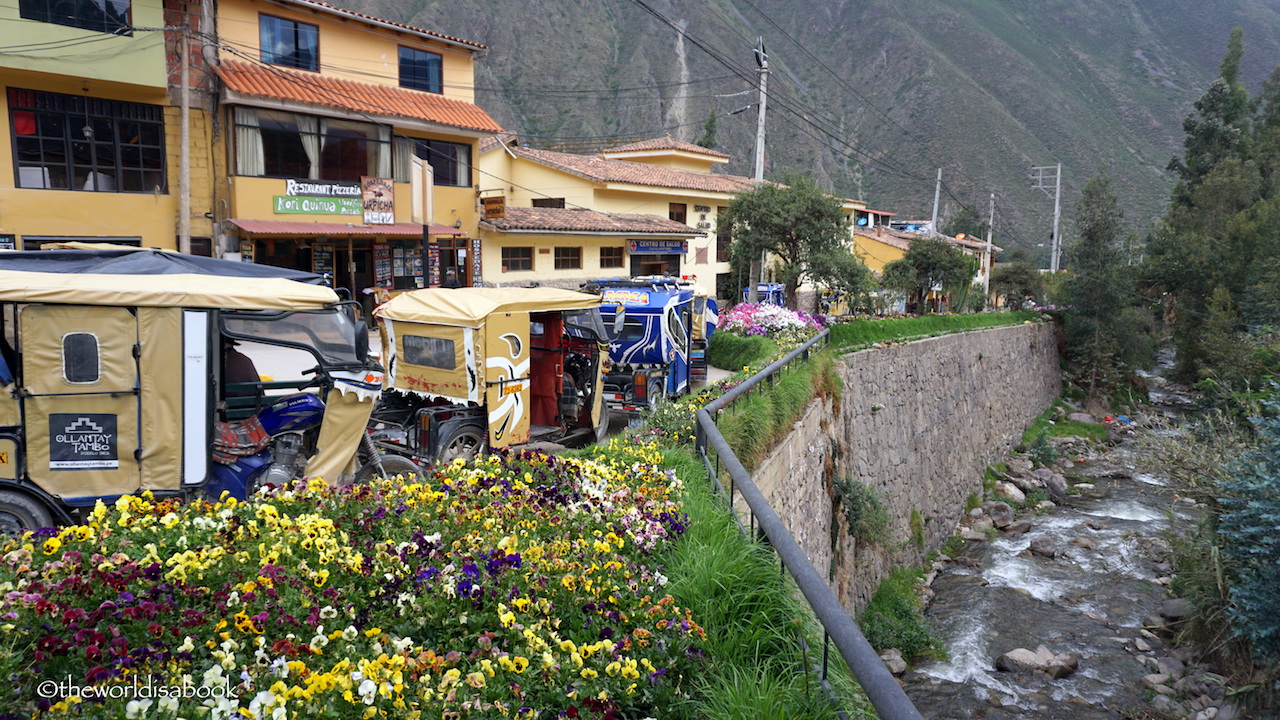
The Inca emperor, known as Pachacuti, conquered this part of the Sacred Valley region and decided to build agricultural terraces, an irrigation system, a ceremonial center and noble houses.
It was a military, religious and political complex, named after Ollanta, an Incan warrior.
Spanish conquistadors invaded and conquered the Inca Empire and Peru and colonized the region for over 250 years years. The Incas lost 90% of their population, mostly from catching diseases from the foreigners, during the Spanish colonization.
Ollantaytambo became a military fortress in response to the Spaniards moving further with their conquest. The Incas successfully defeated the Spaniards in 1536. Unfortunately, the Spanish army led by Pizzaro returned with a much larger army and conquered Ollantaytambo in 1540.
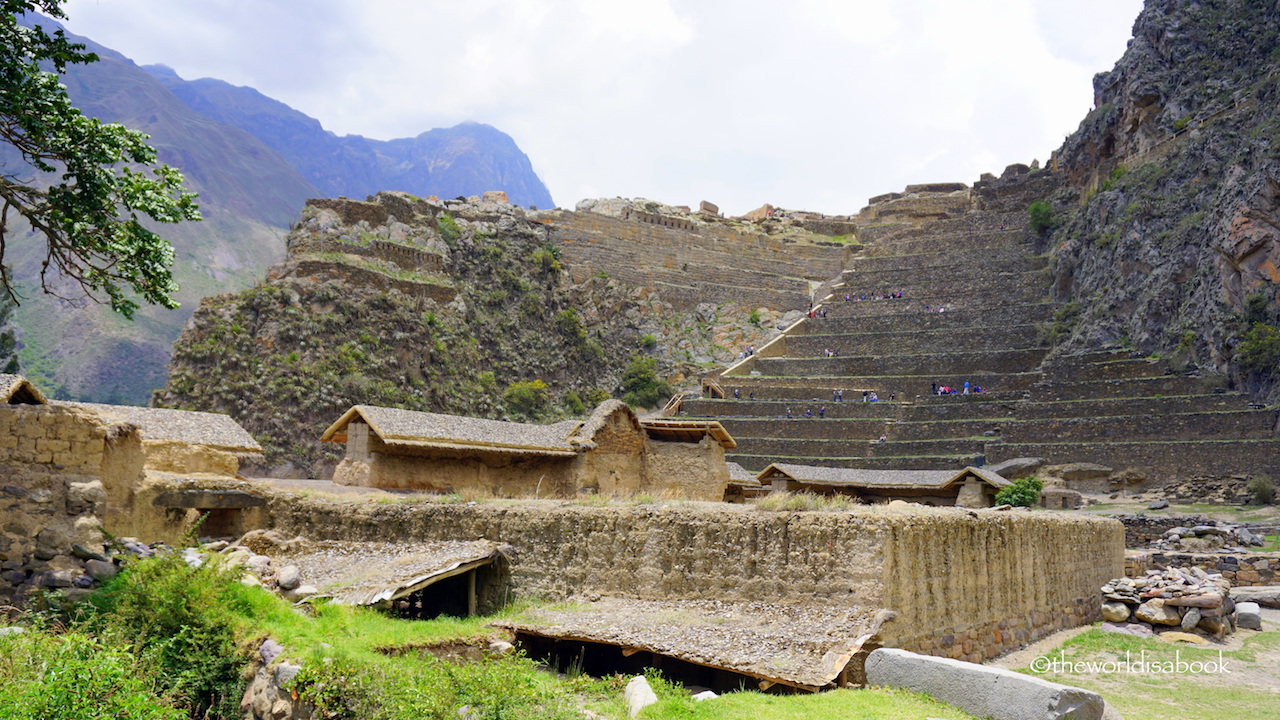
The complex has four areas that included the town, temple hill, ceremonial section and the agricultural area. It was about 600 hectares. The complex can be toured on your own after paying admission fees. But, there were also guides at the entrance readily available to be hired.
Our group of five decided to hire one since we didn’t know too much about this fortress. It really helped to have Edgar around. We learned that he lived in Cusco 70 km away and rides one of the buses daily. His English was excellent and we learned a lot from him.
Looking up at the imposing temple hill was a bit overwhelming. It was our second day in Peru and we were still adjusting to the altitude. Ollantaytambo lies at 9,160 ft (2792 m). We started feeling light headed and were breathing hard as soon as we started climbing.
Luckily, Edgar was so used to the tourists who could only handle a few steps at a time. We took several breaks as he told us the history of this area.
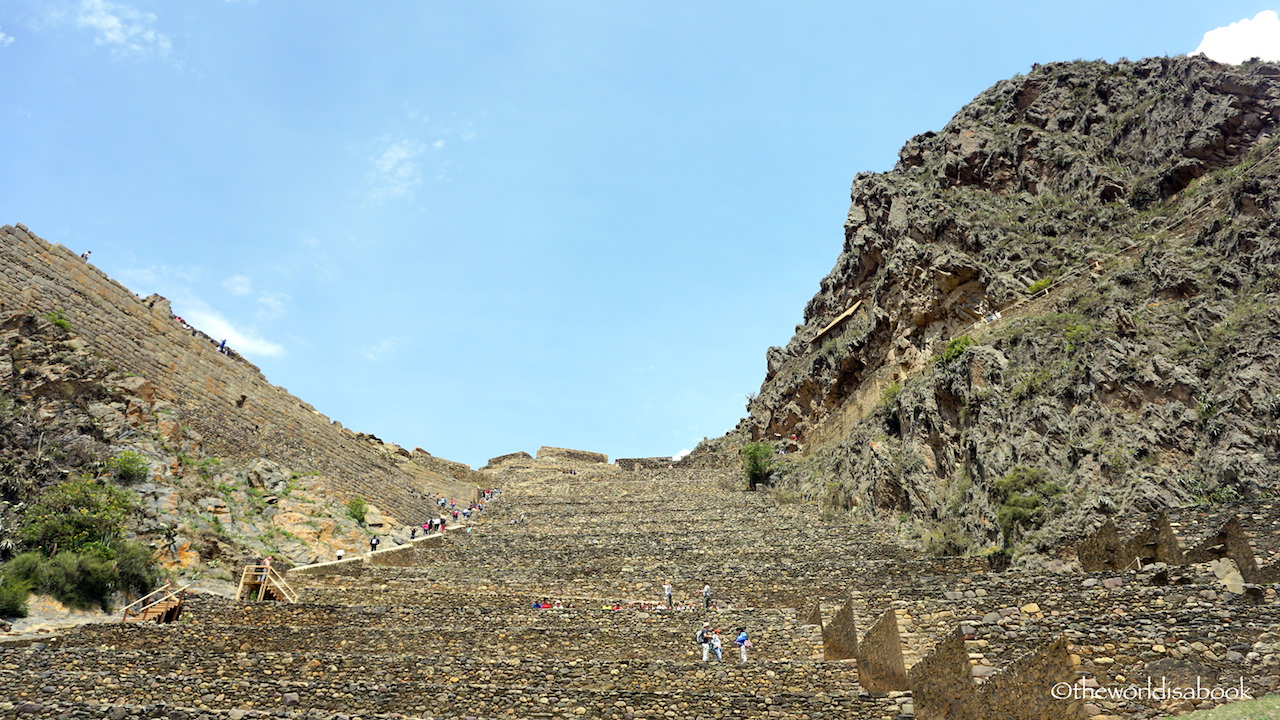
This was our view along one of our rest stops. It was the ceremonial sector along with the town from the fortress.
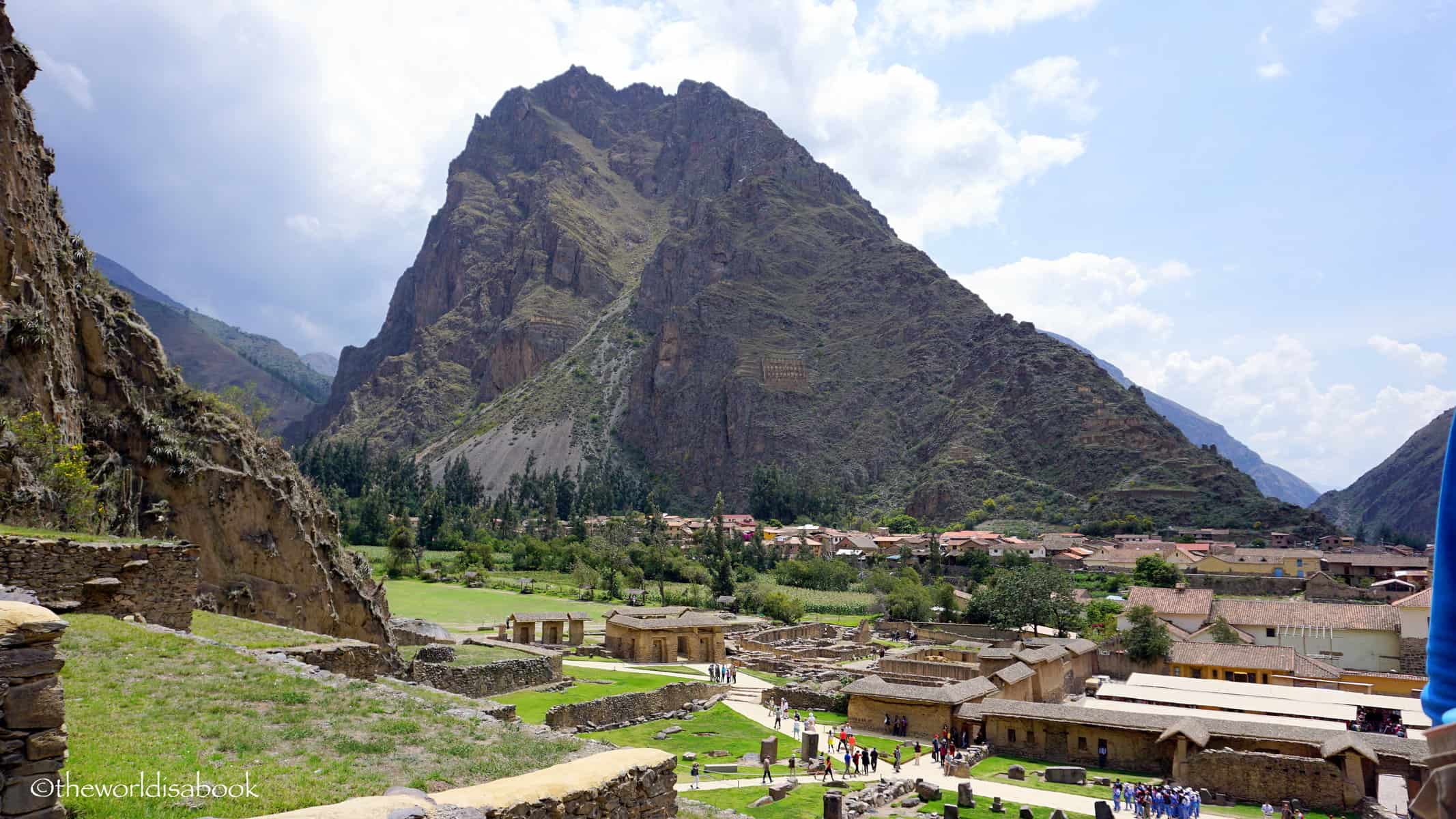
It was also worth admiring the structures across the way. We saw fieldstone storehouses or ‘Qollqa’ or colca on Pinkuylluna mountain to preserve their crops and store surpluses. It was amazing to think how the Incas accomplished building these structures on such a steep hill.
Our guide also pointed out the carved rock formation protruding to the left of the storehouses. This was supposed to be the face of Viracocha who created the Inca mythology. Can you see it?
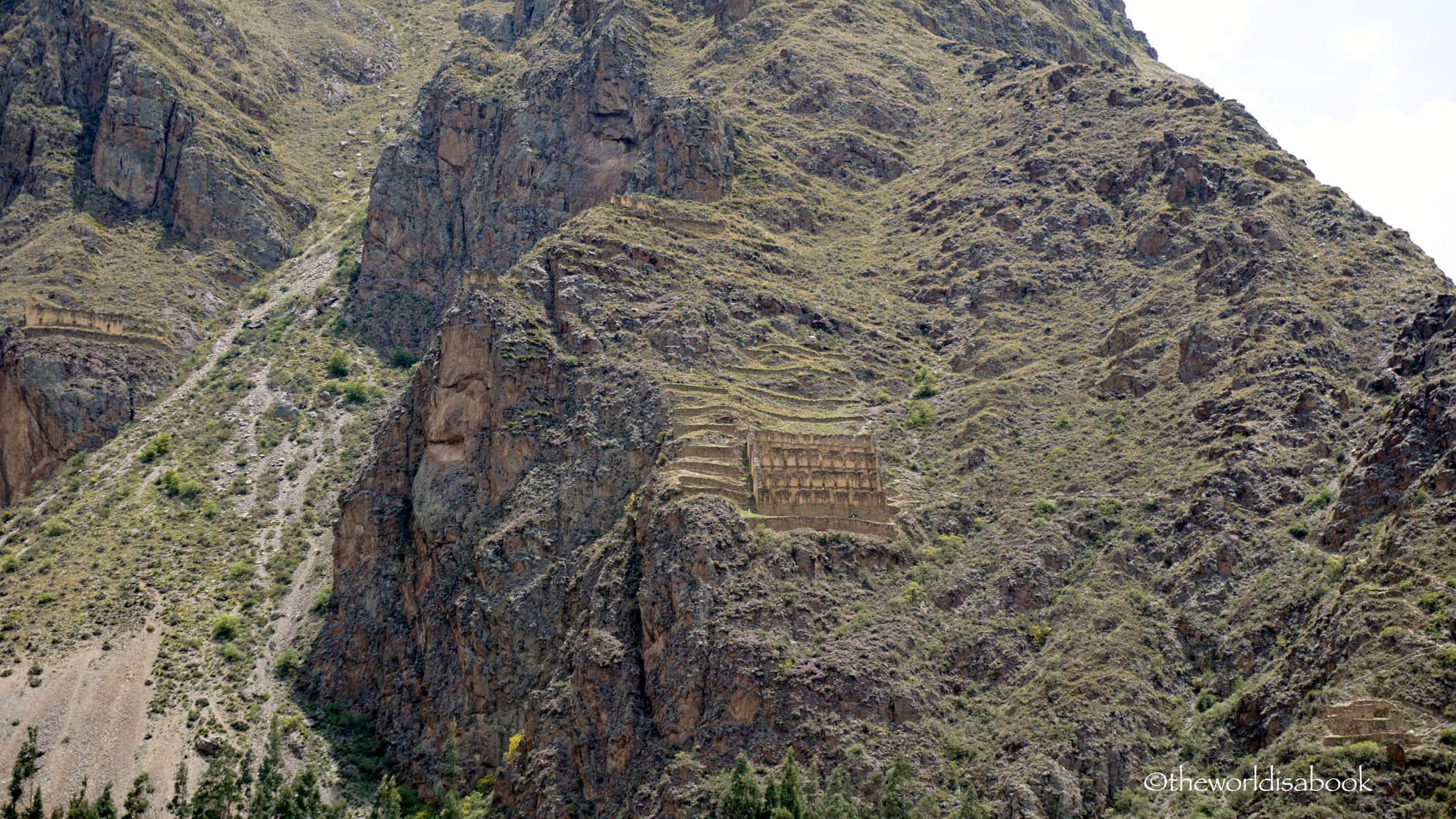
Some may argue erosion did this. But seeing what the Incas were capable of, it wouldn’t have been a surprise to know this was also their handiwork. During the summer solstice, the sunlight passes directly over eye of the carved face.
We climbed the 200 arduous steps to the top of the fortress. Agricultural terraces made up most of Temple Hill. These terraces were taller than all of us and were wide too.
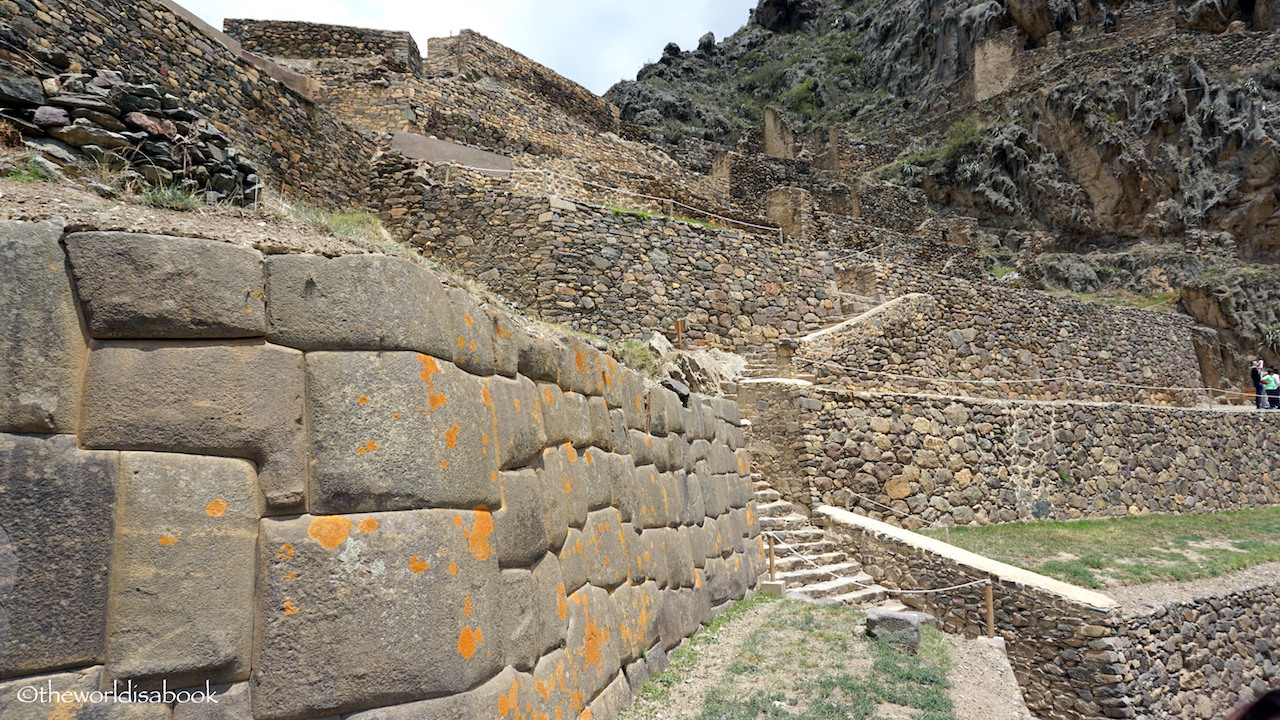
While the views were amazing, the construction of the walls and stonework was even more remarkable. The builders fitted and cut many of the stones so intricately that they fit together like a puzzle and with no mortar in place.
It was quite smooth too. This was a steep area to build too. So, it was interesting to try and figure out how they built the structure and the manpower that went into its construction.
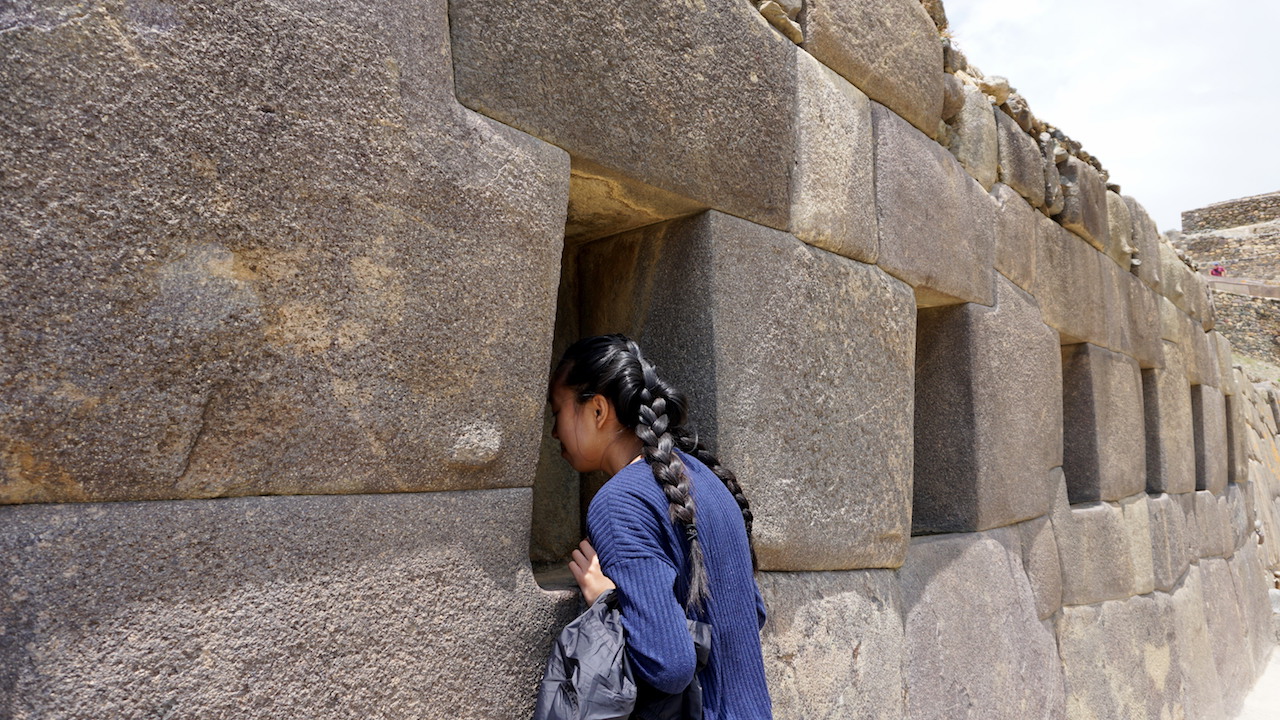
This was the view of the valley behind the ruins. The mountain on the left was part of the quarry where the large stones used to build the walls were mined.
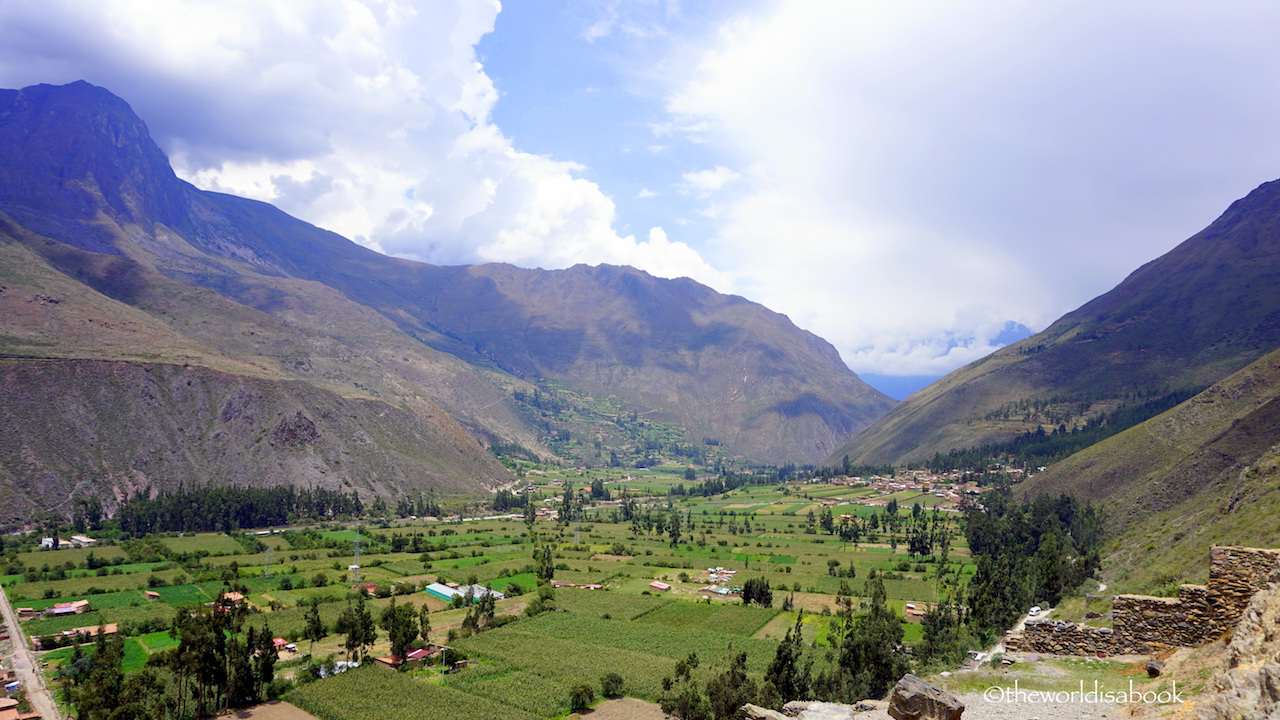
One of the major attractions at the top was the unfinished Temple of the Sun. It was believed to have been used to worship the sun and where they gathered during the solstices. It acted like a calendar for the Incas.
Six monolith stones made up the large wall here. Each stone weighed over 50 tons.
Historians believed that the stones came from the quarry across the valley. It was incredible to imagine how the Incas transported these giant stones from one mountain to another without modern technology.
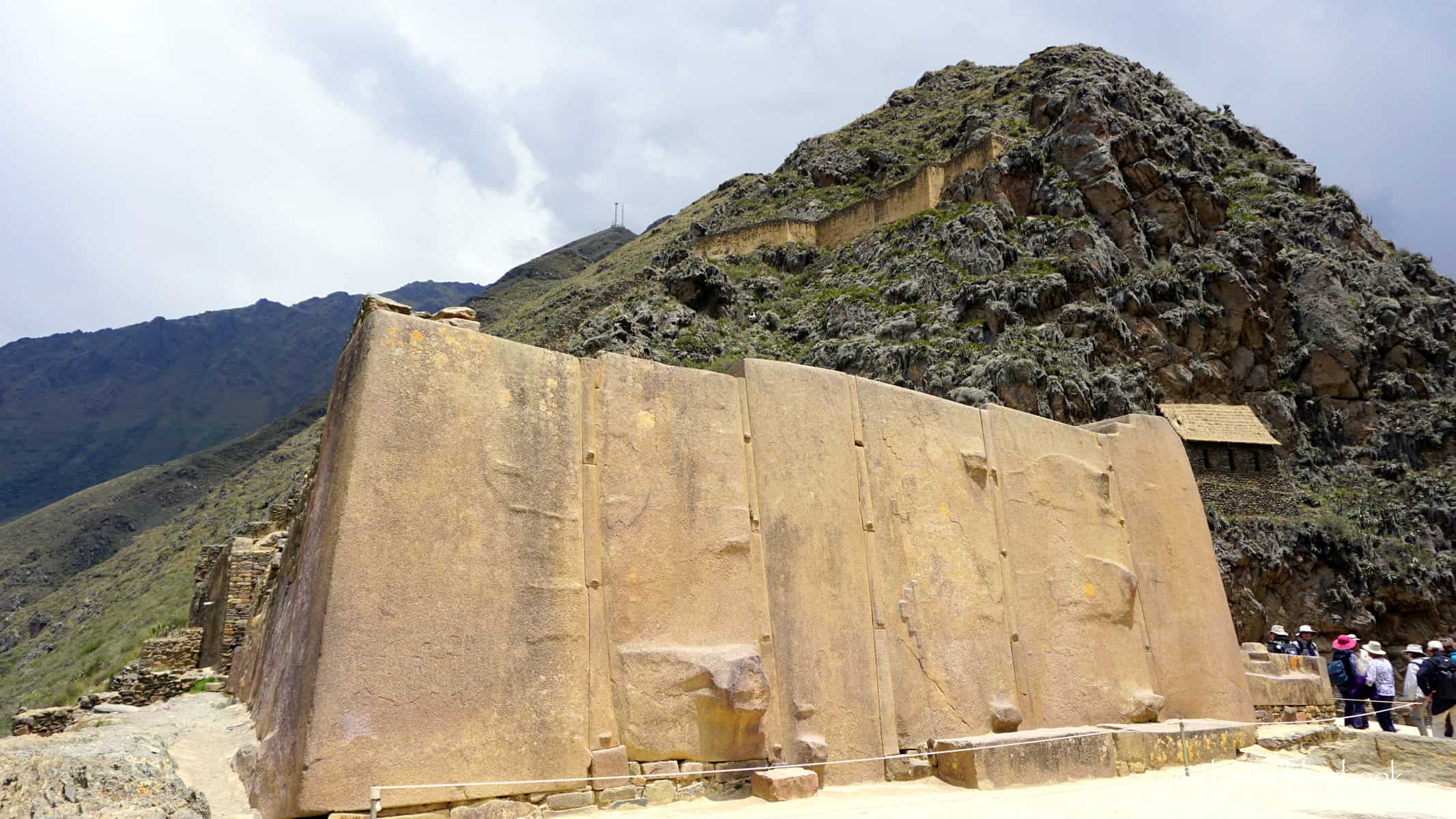
The distance between the two mountains spanned 3.7 miles (6 km). Our guide told us that it probably took hundreds of men spanning weeks to transport one stone. It was also amazing how they carved and made the pieces fit together like a jigsaw puzzle or those Lego brick toys.
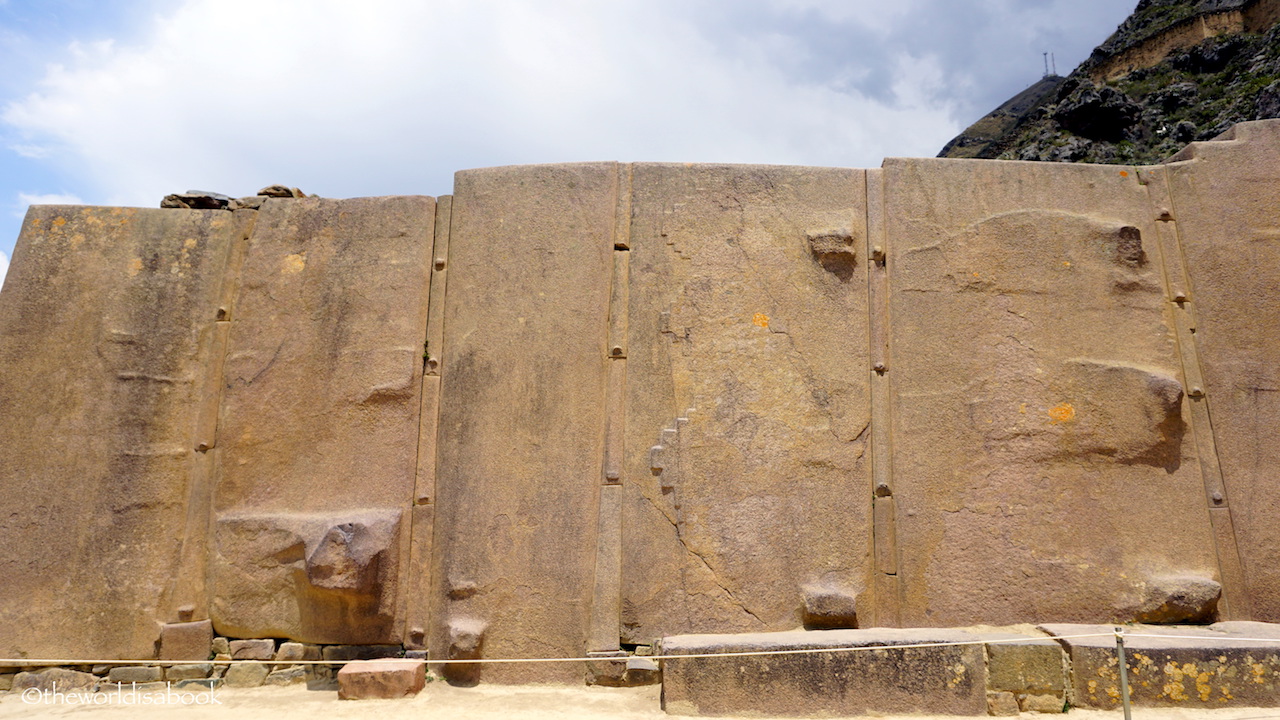
While it may have been a former fortress, there aren’t many military structures left here. They likely chose Ollantaytambo for its location.
It was strategically placed on a mountain top in between two valleys. The fortress was built high up with guard houses to see any incoming invaders. It had large, solid walls and secured gates on steep slopes plus a maze layout below.
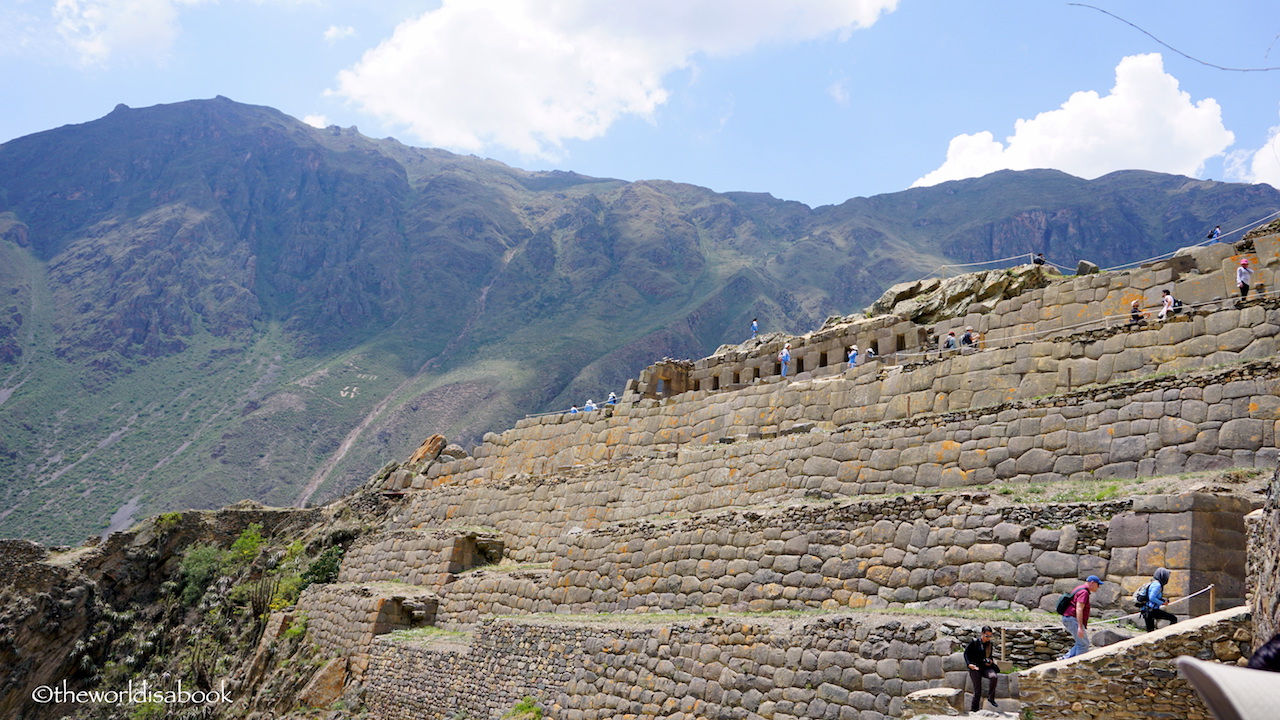
They also used the complex for agricultural purposes. Stepped agricultural terraces or andene were found throughout the area.
The ones on Temple Hill were now largely used as walking paths and rest stops for the visitors. The terrace walls were also huge and made for another realization how incredible the Incas were with their construction.
Though, we found a small section that still had some plants. Most of the crops here were corn, potatoes and quinoa. Many of the terraces throughout the Sacred Valley were built on mountain sides and hills and irrigated by water coming from the mountains.
The steps and terraces ensured the crops were getting more sunlight. They also built it to control irrigation and overflow into the towns below and to increase the space for planting.
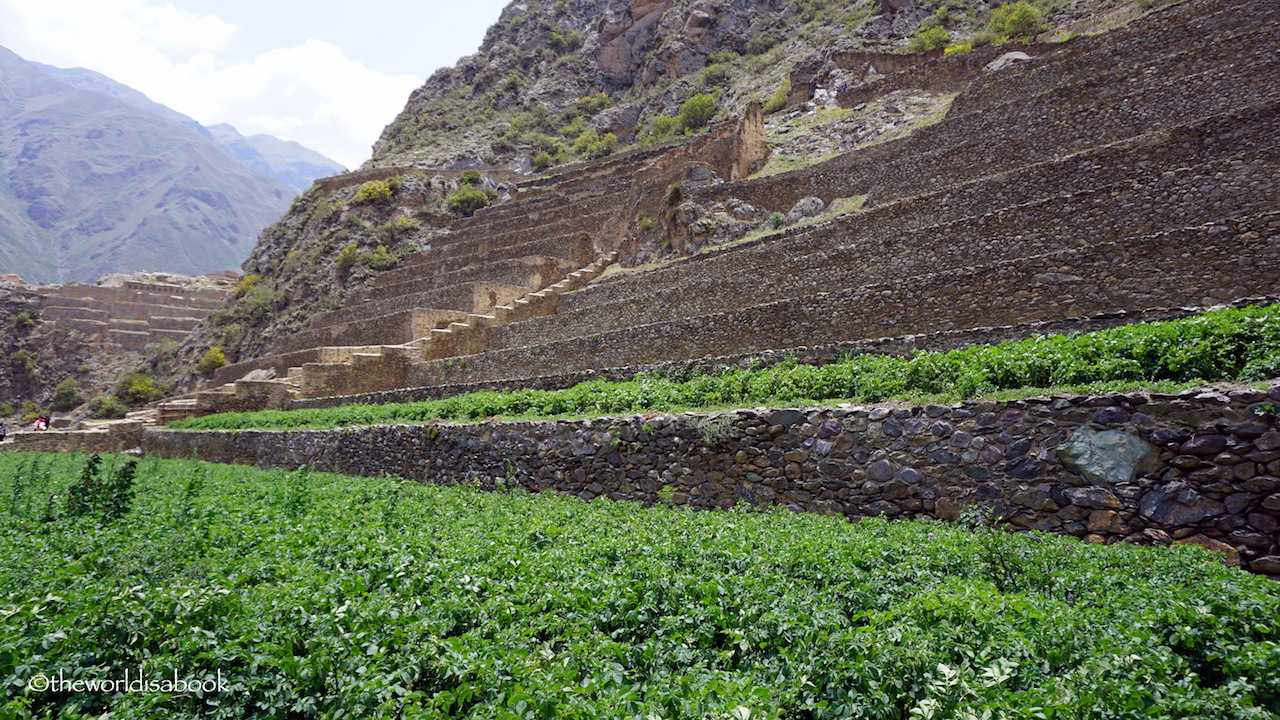
We made our way to the other end of the complex by walking through terraces and steep stairs down to the open field and more ruins. Going down was as slow a process as going up for us.
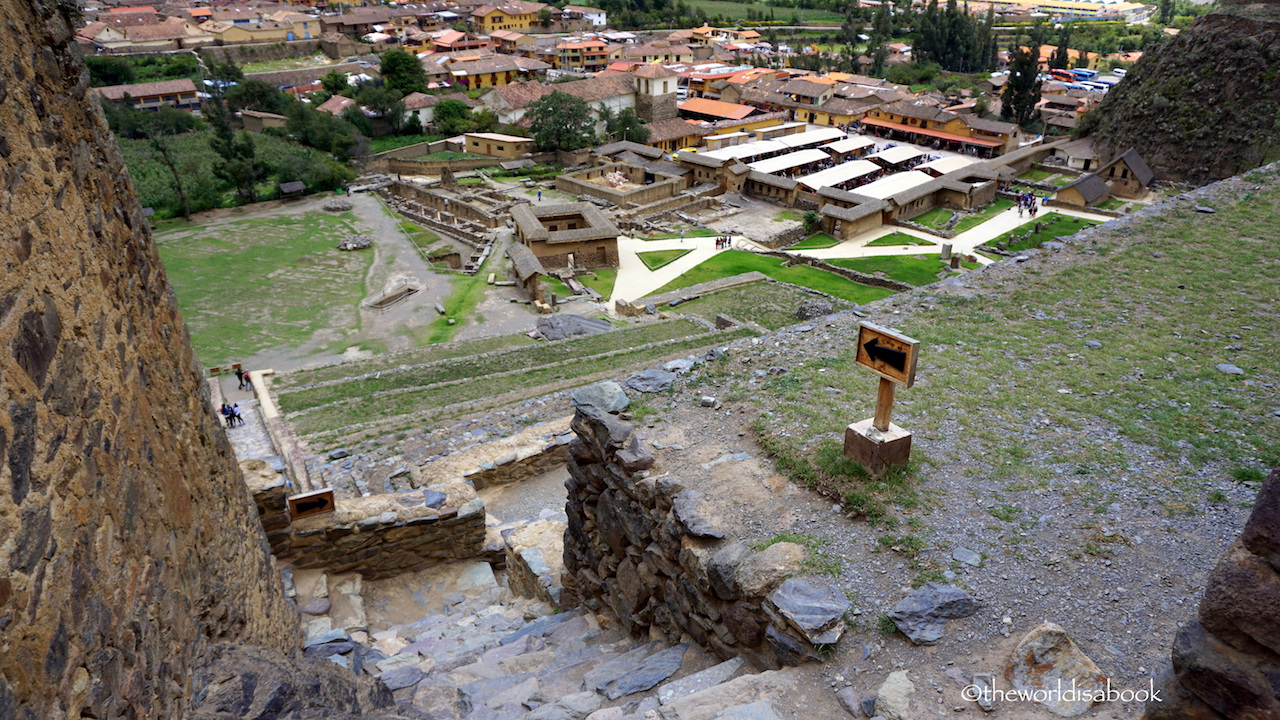
There were a few covered sitting areas here along the river. Take some time to rest, relax and enjoy the view of the fortress and ruins from here.
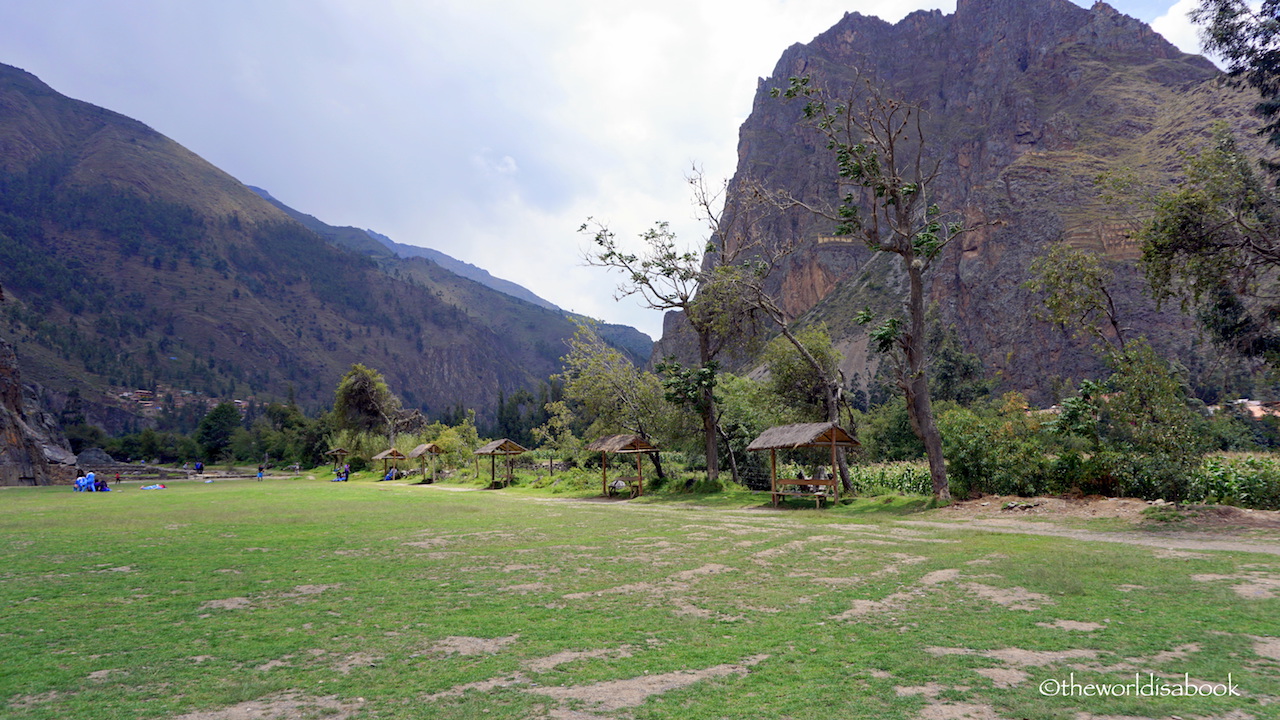
Our guide finished our tour at the ritual sector by the base of the fortress. The Patakancha river runs alongside this area that was used by the complex and the neighboring fields.
This was once the water temple and it was surrounded by several fountains. There was something very calming in this area where we heard all the water flowing.
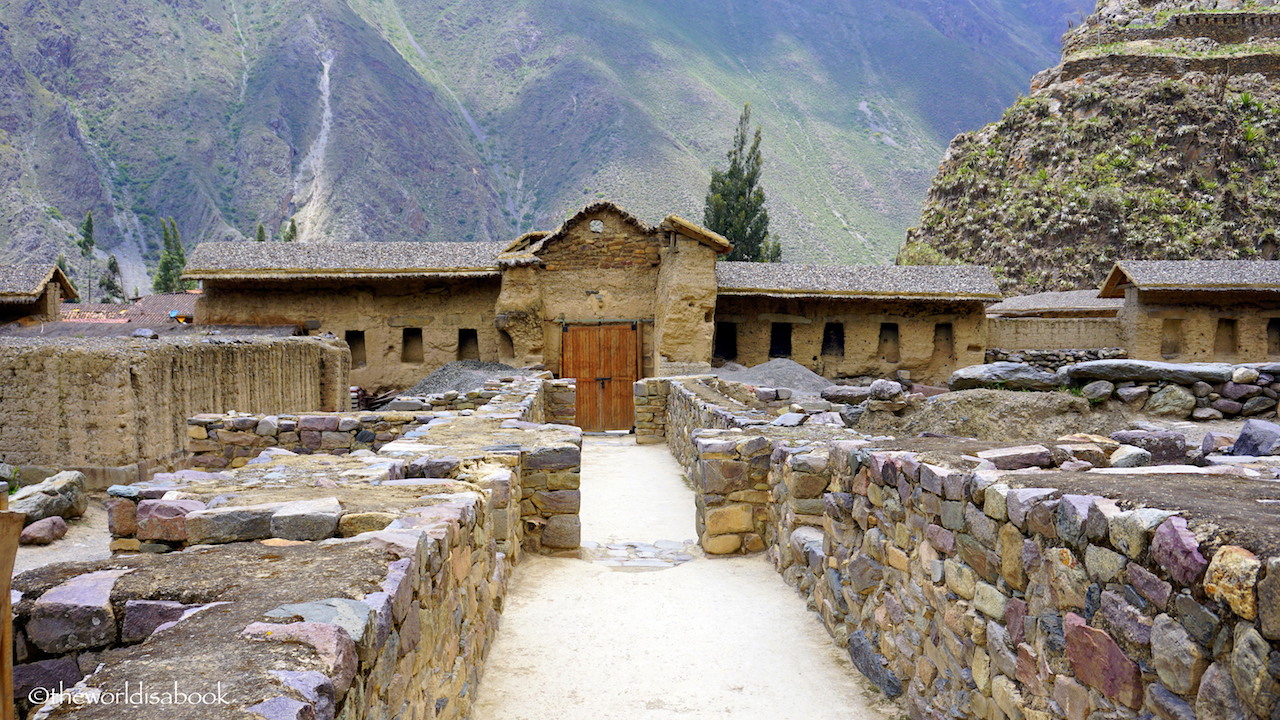
The most popular fountain was the Bath of the Princess (Baño de la ñusta). Inca ruins had the three level symbolism that we found here in the granite fountain. These were the heaven (represented by the condor), the present or living (represented by the puma) and the underworld (represented by the snake).
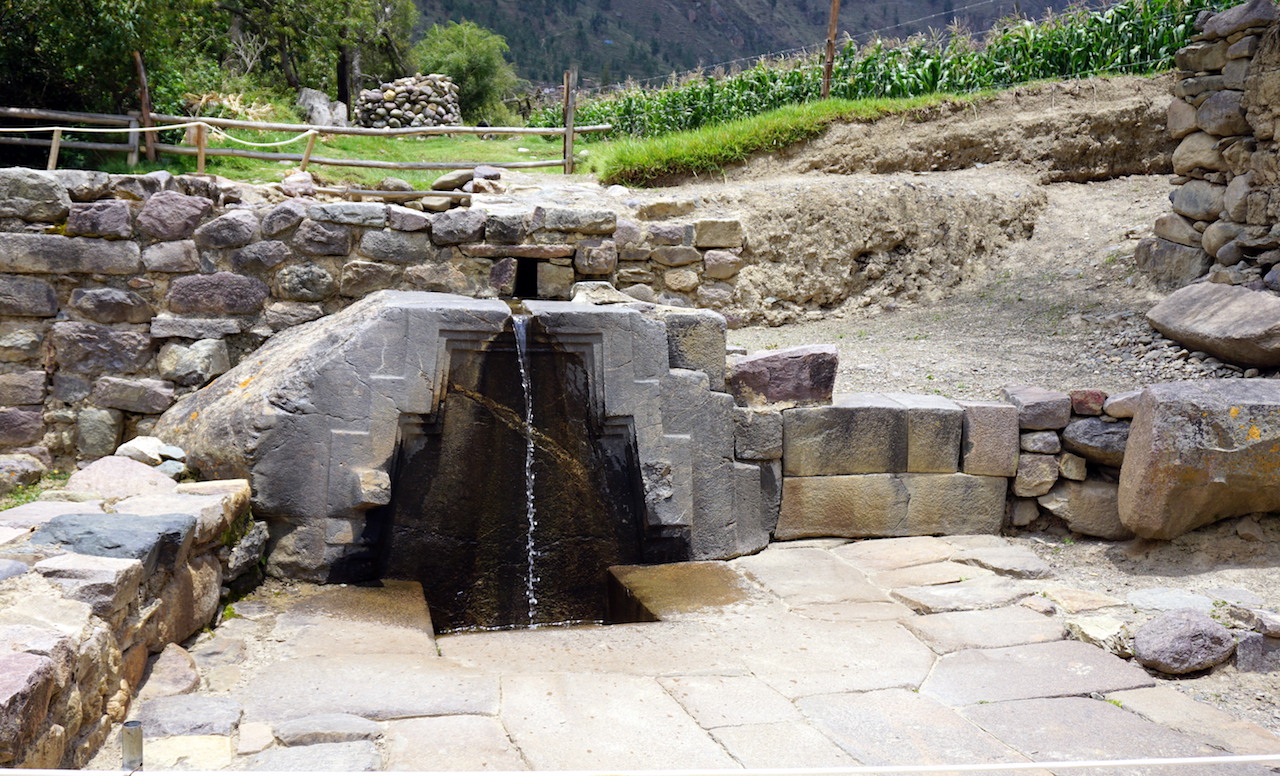
The Town and Market
We enjoyed visiting the markets around the many towns in the Sacred Valley. Ollantaytambo’ s market was the smallest that we visited. But, we found some unique items here not found elsewhere. Though, Cusco was still cheaper for most of the souvenirs. The market stalls were right outside the entrance and exit of the ruins. Don’t miss the stalls that sell fresh fruits.
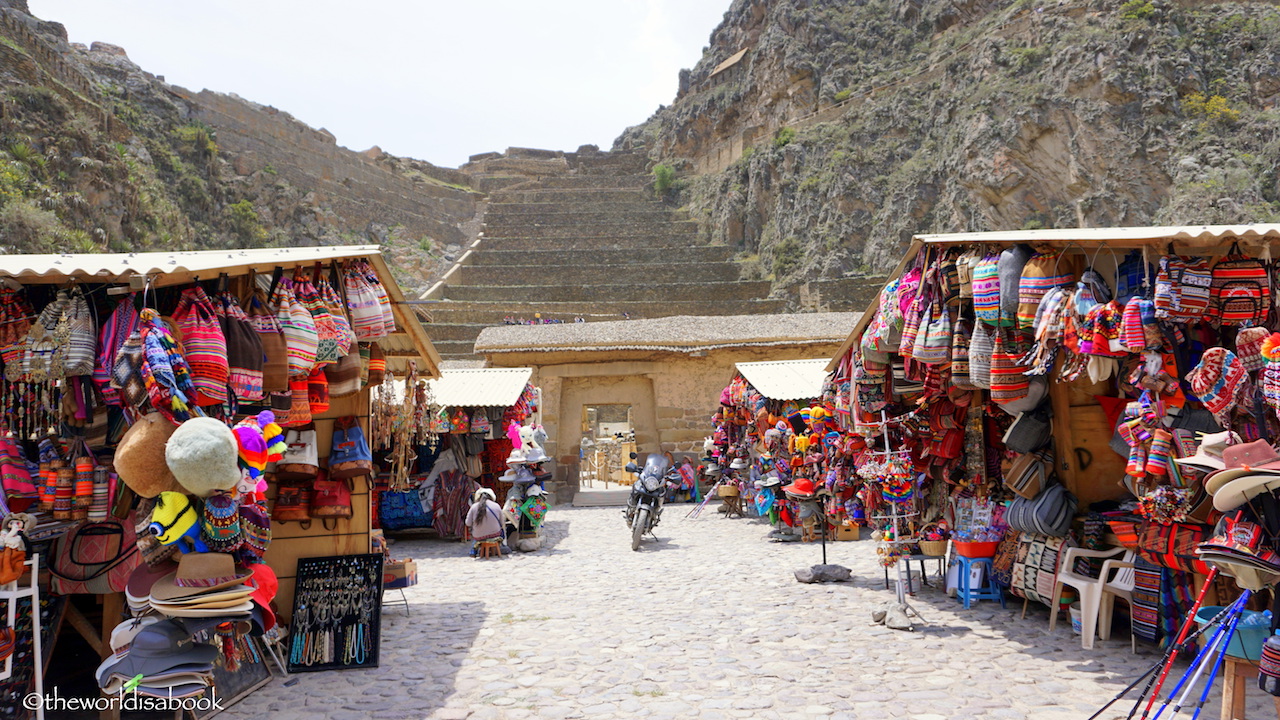
We really liked wandering around the old traditional town of Ollantaytambo. Its size was just right and we felt safe even walking at night. Much like the other Peruvian towns we visited, there was a small square in the center surrounded by shops and restaurants.
The locals kept the cobblestoned streets very clean. We found people cleaning after the stray dogs roaming around here.
Don’t worry, the dogs don’t bother the visitors at all. Adobe walls lined many of the streets.
We loved the street of our hotel where canals and water continuously flowing was a calming sound. There was no shortage of locals dressed in their colorful, native clothes walking the streets.
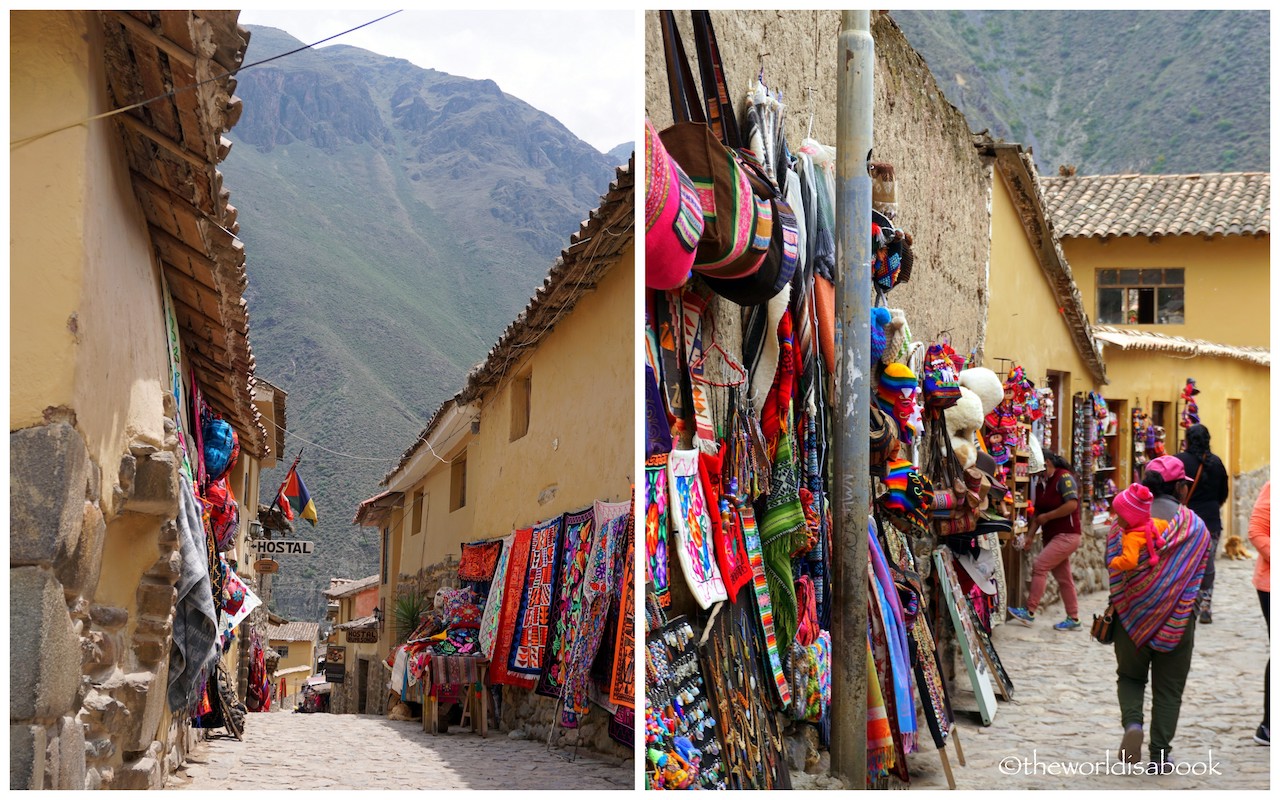
The Ollantaytambo fortress and ruins do not get as much publicity as the nearby attractions. But, this town and fortress shouldn’t be missed.
While this town may be the start of the train journey to Machu Picchu and the Inca Trail, we found it charming and staying here was one of our favorite parts of our Peruvian trip. We recommend exploring Ollantaytambo on the way to fulfilling that bucket list item and making it a part of a memorable visit in Peru’s Sacred Valley.
Guide and Tips for visiting the Ollantaytambo Ruins
- Hours: 7 AM to 6 PM (all year)
- Get the Full Tourist Ticket (Boleto turistico) that includes these ruins along with 16 other attractions around Cusco and the Sacred Valley valid for 10 days or the Partial Tourist Ticket including this and 3 other attractions (Pisac, Chinchero, Moray) valid for 2 days. No individual tickets to attractions are sold. Tickets can be bought at the COSITUC office at Avenida Sol 103 office 102 Galerias Turisticas (daily 8am-6pm) or at any of the sites included on the ticket.
- Get a Guide. There’s not much information about Ollantaytambo out there. The best way to really know more about these ruins is through a local guide. They’re readily available at the entrance. Some even gave discounts for kids. Agree on the price before starting the tour.
- Wear comfortable walking shoes. The stairs are steep and some areas are uneven. You will do a bit of walking so wear closed-toe, walking shoes.
- Restrooms were available by the entrance. There are no others available around the ruins. Use it before your tour.
- Be an early bird. Go to the ruins as early as you can. We were there around 8:30 and there weren’t that many people yet. By the time we got out close to 11 AM, there were a whole lot more people and even more in the afternoon.
- This is a high altitude area and altitude takes some getting used to. It is also 200 steps to the top. Take your time and rest in between steps. There were benches on some of the terraces to enjoy the views and rest.
- Ride the tuktuk. It is a cheap and fun experience and you don’t even have to ride it for long. It’s a short ride from the town center to the ruins and vice versa.
- Market shopping. Walk around the stalls and compare prices. They do encourage bargaining.
- Where to Eat: We enjoyed our lunch at the Tawachaki. There was a three course meal for lunch for about $9 (US) and everything we had was delicious. They offered chicha moradas along with the meal. It’s purple corn juice. It was quite tasty and sweet. The restaurant was clean and spacious and right by the market near the ruins’ entrance. Go to the Choco Museo across the street afterwards for some chocolate samples and treats.
- We highly recommend staying a few days in Ollantaytambo and even using this as a base to get to Machu Picchu on a day trip.
- Where to stay: We loved our stay at the B&B Wasi Picaflor. Prices were reasonable and the location was a short walk from the square. Rooms were clean and spacious. We loved our home cooked breakfast everyday. They were also very helpful. We booked our driver that took us to/from Cusco with them.
*Are the Peruvian ruins on your travel wish list?
Pin it for later!
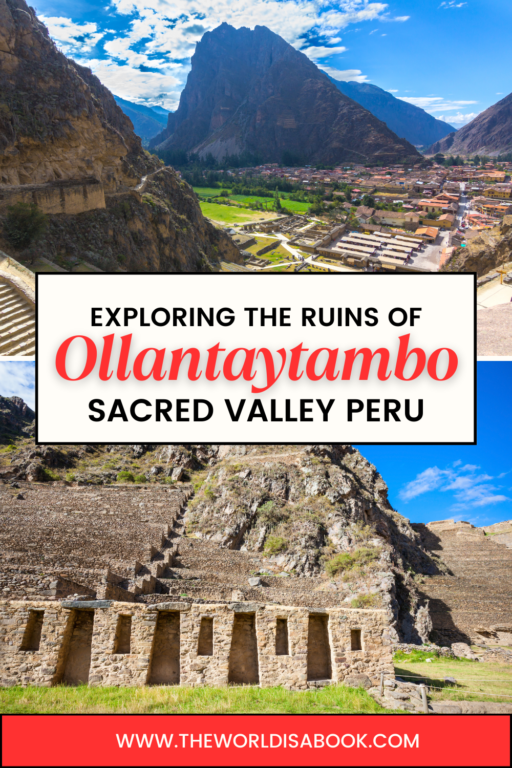
Such an amazing place! Peruvian ruins have been on our wish list for years.
#TravelPhotoThursday
I’d love to go to Peru. It’s been a while since I wanted to see the Sacred Valley and Machu Pichu, so I’m hoping to get there sometimes next year. For now that it’ll have to settle to just spend 4 (long) hours in Lima, on a connecting flight to Patagonia. Thanks for the great Tips for visiting the Ollantaytambo Ruins. How crowded is this place? Is it worth being at the gate before 7 a.m.? #TheWeeklyPostcardb
I love historic places so much, and I like your advice of getting a guide. You’d definitely get a whole lot more out of a place like this than if you just went alone. I’ve never actually been to Peru but it’s on the bucket list and I’ve pinned your post for when I start planning that trip! #TheWeeklyPostcard
So much to love about your post! Great tips and photos. How much do I want to go now – Heaps! I can’t wait to experience the sights, people and markets for myself one day. Annette
I agree that the construction and manpower used to create the fortress is amazing. Moving those six large stones would have been a site to see. I am partial to the local markets and particularly like the colourful themes in Peruvian (and various other Central and South American) art and fabrics.
Wow, that is an impressive place. The construction is amazing and so are the views. I agree it was a good idea to get the guide. I bet the kids loved riding in the tuk tuk! Thanks for sharing on #TheWeeklyPostcard.
Wow! What an incredible place with so much history. This is the first time I heard of Ollantaytambo. Thanks for sharing your wonderful experience and photos.
awesome place #theweeklypostcard
You’re absolutely right, you usually don’t hear much about Ollantaytambo. It looks incredible though, and the perfect place to explore the area from. That stonework is amazing, and it’s incredible how intact so much of it is. Great engineering. Thanks for sharing on #TheWeeklyPostcard
I have heard about this town and the ruins but I wasn’t aware of the magnitude of the place. Wow, I am in awe. The place is huge and the views great. I know it would be better to explore with a guide. I would love to stay some days in the Sacred Valley. #WeekendWanderlust
This place looks absolutely amazing. Monumental and majestic. #Theweeklypostcard
I’m so happy you brought this town to my attention. We love finding somewhere that hides in the shadow of a big name destination to explore. I think I will plan to stay there for a while before attempting the 200 stairs. I dislike stairs (but still do them) so the thought of doing it at altitude is a little scary. But if I stayed there for a few days first it should be achievable. What an incredible place.
I’ve not heard of Ollantaytambo but it looks very interesting and worth visiting. I would have my trouble with the stairs at that altitude but I think it would be worth it! Thanks for sharing!
Thank you so much for this post. I will be visiting Peru next week, 3/27/18 and I’ve read many articles, but yours was the first to mention tuktuks. Tuktuks!! Oh thank heaven! I plan on hiring a guide at the gate also. Thank you for the details.
Thank you, how long would you recommend to visit it ?
How long should we allow for 2 adults and 4 kids to tour the ruins?
Pingback: Add To Bucket List: 47 Incredible Experiences In South America